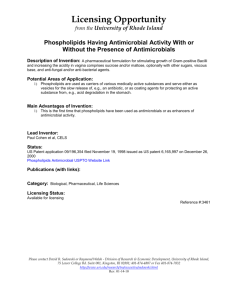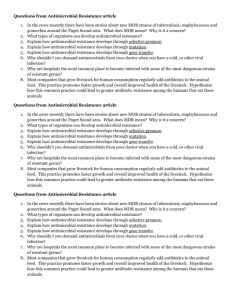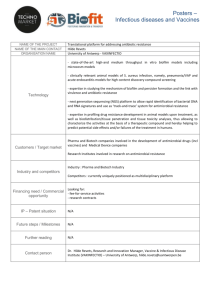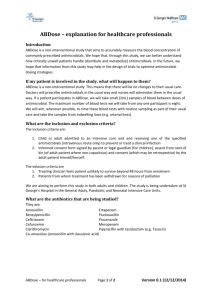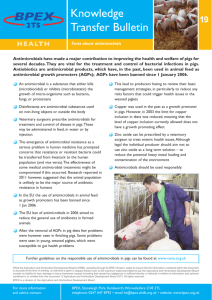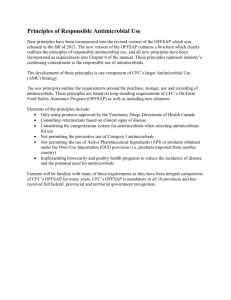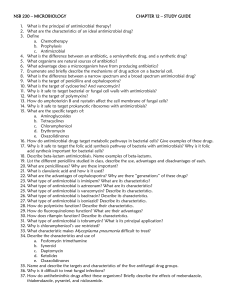Media Release
advertisement
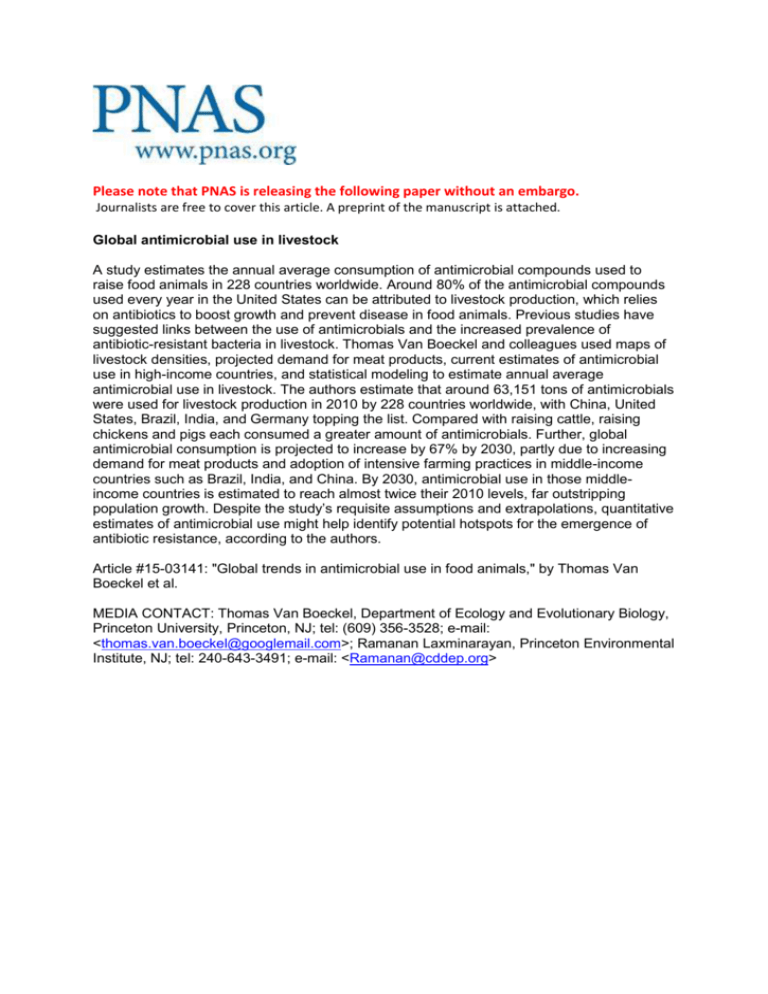
Please note that PNAS is releasing the following paper without an embargo. Journalists are free to cover this article. A preprint of the manuscript is attached. Global antimicrobial use in livestock A study estimates the annual average consumption of antimicrobial compounds used to raise food animals in 228 countries worldwide. Around 80% of the antimicrobial compounds used every year in the United States can be attributed to livestock production, which relies on antibiotics to boost growth and prevent disease in food animals. Previous studies have suggested links between the use of antimicrobials and the increased prevalence of antibiotic-resistant bacteria in livestock. Thomas Van Boeckel and colleagues used maps of livestock densities, projected demand for meat products, current estimates of antimicrobial use in high-income countries, and statistical modeling to estimate annual average antimicrobial use in livestock. The authors estimate that around 63,151 tons of antimicrobials were used for livestock production in 2010 by 228 countries worldwide, with China, United States, Brazil, India, and Germany topping the list. Compared with raising cattle, raising chickens and pigs each consumed a greater amount of antimicrobials. Further, global antimicrobial consumption is projected to increase by 67% by 2030, partly due to increasing demand for meat products and adoption of intensive farming practices in middle-income countries such as Brazil, India, and China. By 2030, antimicrobial use in those middleincome countries is estimated to reach almost twice their 2010 levels, far outstripping population growth. Despite the study’s requisite assumptions and extrapolations, quantitative estimates of antimicrobial use might help identify potential hotspots for the emergence of antibiotic resistance, according to the authors. Article #15-03141: "Global trends in antimicrobial use in food animals," by Thomas Van Boeckel et al. MEDIA CONTACT: Thomas Van Boeckel, Department of Ecology and Evolutionary Biology, Princeton University, Princeton, NJ; tel: (609) 356-3528; e-mail: <thomas.van.boeckel@googlemail.com>; Ramanan Laxminarayan, Princeton Environmental Institute, NJ; tel: 240-643-3491; e-mail: <Ramanan@cddep.org>




